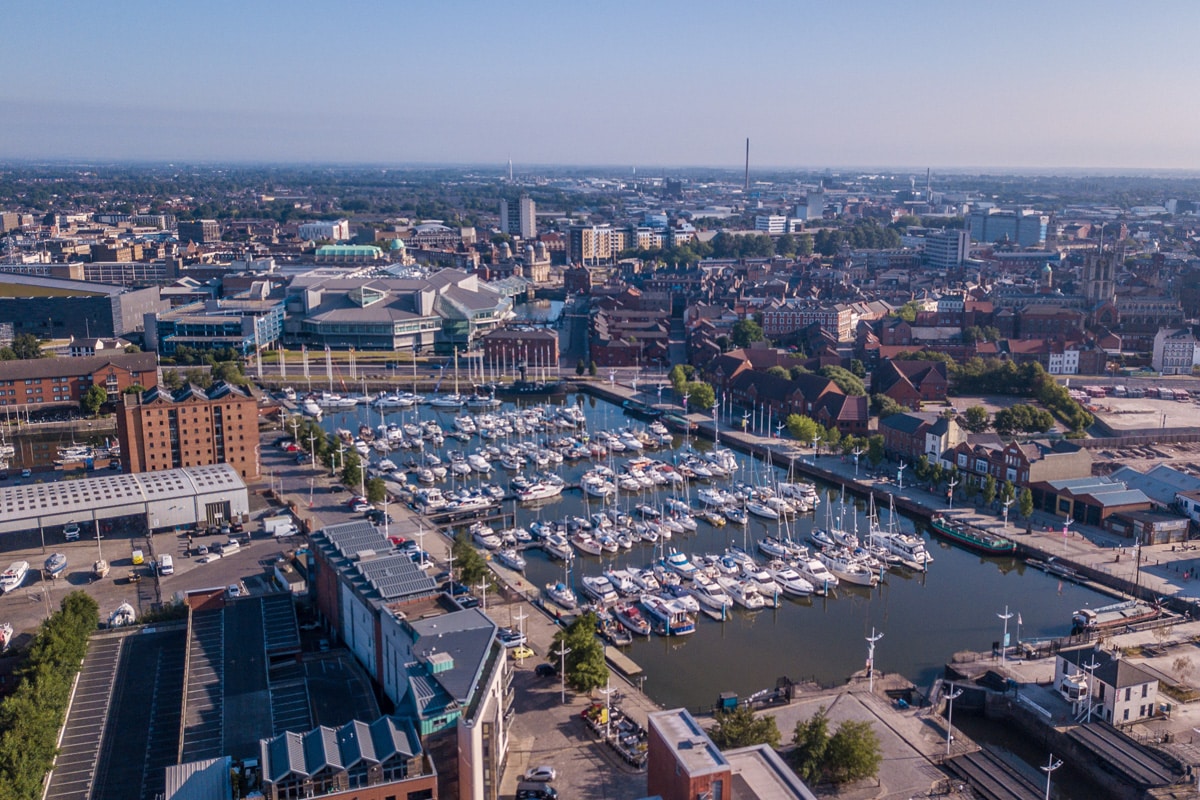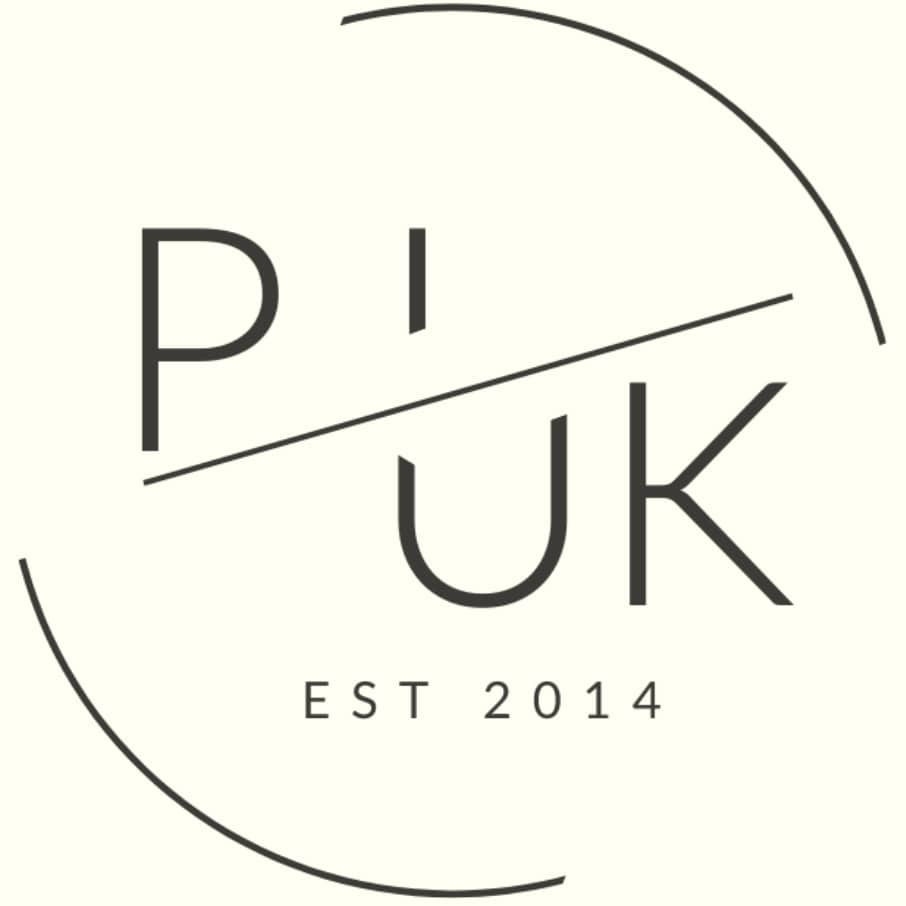Areas of Hull: Buy-to-Let Property Investment Hotspots
Let’s be honest, Hull has a reputation as a dreary northern city. But visit it and you’re sure to be surprised. As well as being something of an industrial powerhouse with numerous large and well-known companies it’s also a hotspot for culture. Plus, investors will be pleased to know Hull offers some of the cheapest buy-to-let property in the country. To quote a local saying, Hull is anything but dull!
Contents
- Why Invest in Hull?
- Transport and Connections
- Property Values
- Average Asking Price by Postcode Area
- House Price Growth
- Landlord Licensing
- Rental Demand
- Average Rental Yield by Postcode Area
- Population Versus Number of Households by Postcode Area
- Average Rental Yields for 2 Bedroom Properties by Postcode Area
- Property Investment in Hull
Why Invest in Hull?
Firstly, there are a few things that you need to know about Hull: Hull is more correctly known as Kingston Upon Hull. Oddly, Hull is named after the smallish River Hull on which it is located and not the much larger River Humber on which it is also located.
Another myth to bust about Hull is that it’s in Humberside, which it hasn’t been for some years. It’s actually in East Yorkshire, although the city of Hull is in the Hull City Council area.
As of 2023, the population of Hull was estimated to be around 268,852, with around one-quarter of Hull’s population being aged 0-19 years and another quarter aged 20-36 years. This is something that can only help the Hull property market.
Hull is best known for being a major trading and fishing port – industries which still exist today but in a smaller form than in the past. Modern-day Hull is an enterprising city, attracting world leaders from a diverse range of sectors, and is home to almost 10,000 businesses.
Key Hull industries include manufacturing, ports and logistics, food processing, chemicals, research and development, retail and education. Big-name employers in Hull include Associated British Ports (ABP), Aunt Bessies, BP, Crown Paints, Ideal Standard, KCom Group, Reckitt Benckiser, Siemens Gamesa and T.J. Smith & Nephew.
Very excitingly, Hull is becoming a global centre for renewable energy, with the development of the Siemens Gamesa wind turbine factory at Green Port Hull.
It’s true to say Hull has suffered more than its fair share of industrial decline, is often underrated and some of the housing estates there have been much stigmatised in the past, most notably Orchard Hill, which was described in the 80s as 'one of the poorest peripheral estates in Britain'.
But regeneration started in the 1980s with the development of Hull Marina and Prince’s Quay. Hull was the UK City of Culture 2017. This attracted more than five million people, £220m of investment and 800 new jobs to Hull and has brought even more investment since.
For an industrial city, Hull has plenty of attractions for visitors too. The Deep is said to be one of the world’s most spectacular aquariums. There’s also the Ferens Art Gallery, Hull Maritime Museum, the Wilberforce House Museum, Hull New Theatre, Hull Old Town and the oddly-named Land of Green Ginger.
As of 2024, the University of Hull has more than 14,000 undergraduate students and on campus, 2,312 student rooms. The Hull York Medical School also has a campus here. The university’s campus is on Cottingham Road in north Hull. Favourite areas for student accommodation landlords include Cottingham Road, Newland Avenue and Beverley Road.

Transport and Connections
Hull continues to benefit from excellent transport links, both nationally and internationally. The city's proximity to the M62 motorway and the iconic Humber Bridge, which connects Hull to Lincolnshire, is a significant advantage. Hull Paragon Interchange offers convenient direct rail services to major hubs like York, Sheffield, and London.
For air travel, Humberside Airport provides daily connections to Amsterdam and other global destinations. The Port of Hull remains a vital gateway for international trade, handling an impressive 10 million tonnes of cargo annually. Additionally, P&O Ferries operates regularly between Hull, Rotterdam and Zeebrugge in Belgium.
Hull also boasts an efficient local transport network. Residents and visitors can use frequent bus services, including the Park & Ride, connecting various parts of the city. Stagecoach provides comprehensive bus routes throughout Hull and its surrounding areas. Moreover, Hull's Hull Trains network offers quick and efficient travel options.
Cyclists will find dedicated cycle lanes across the city and surrounding areas, with Hull Cycle Hub providing secure bike storage and repair facilities. Hull also has a community transport service, operated by East Hull Community Transport, which caters to the needs of individuals and community groups.
Property Values
Hull remains one of the most affordable places to buy property, in the country. The average property price in the city is around £134,363 to £170,797, significantly lower than the national average.
According to various sources, the median property price in Hull is between £143,535 and £158,044.
Rightmove and Zoopla suggest that investment properties in the area start from around £41,000 to £101,000.
While some districts in Hull are quite deprived, others are more desirable. This variety alongside low property prices compared to the rest of the UK presents an attractive prospect for investors.
Despite the currently challenging property market, forecasts for Hull predict a possible price increase of up to 17.5% over the next five years. This can be compared to an anticipated 6% increase for the UK market, as a whole, over the same period.
Average Asking Price by Postcode Area
Last updated: July 2024
Data from HM Land Registry
| Postcode District | Average Property Price |
|---|---|
| HU1 | £126,115 |
| HU2 | £89,678 |
| HU3 | £120,489 |
| HU4 | £169,605 |
| HU5 | £139,893 |
| HU6 | £151,063 |
| HU7 | £181,140 |
| HU8 | £157,196 |
| HU9 | £120,513 |
| HU10 | £307,715 |
| HU11 | £248,357 |
| HU12 | £214,263 |
House Price Growth
Figures taken from the House Price Index, December 2023, from the ONS for the City of Kingston upon Hull.
| Date | Price | Date | Price |
|---|---|---|---|
| 2023-12-01 | £133,178 | 2008-12-01 | £92,155 |
| 2022-12-01 | £136,276 | 2007-12-01 | £100,558 |
| 2021-12-01 | £124,529 | 2006-12-01 | £93,850 |
| 2020-12-01 | £118,346 | 2005-12-01 | £82,291 |
| 2019-12-01 | £113,547 | 2004-12-01 | £70,223 |
| 2018-12-01 | £113,466 | 2003-12-01 | £55,006 |
| 2017-12-01 | £110,011 | 2002-12-01 | £45,810 |
| 2016-12-01 | £107,476 | 2001-12-01 | £36,716 |
| 2015-12-01 | £97,008 | 2000-12-01 | £34,225 |
| 2014-12-01 | £92,849 | 1999-12-01 | £34,452 |
| 2013-12-01 | £90,062 | 1998-12-01 | £32,308 |
| 2012-12-01 | £90,472 | 1997-12-01 | £32,650 |
| 2011-12-01 | £87,079 | 1996-12-01 | £33,924 |
| 2010-12-01 | £92,072 | 1995-12-01 | £34,632 |
| 2009-12-01 | £93,694 |
Landlord Licensing
Hull has various regulations in place regarding landlord licensing. It's important to note that all landlords must ensure their properties meet safety standards, such as having adequate fire precautions and up-to-date gas safety certificates.
For properties considered to be Houses in Multiple Occupation licensing requirements come into play. In Hull, as is true everywhere in the UK, an HMO is defined as a property occupied by three or more unrelated individuals who share amenities like bathrooms and kitchens.
Landlords of HMOs in Hull must apply for a licence and follow specific guidelines. The city's Article 4 Direction removes permitted development rights, meaning planning permission is required to convert a property into an HMO. This applies to certain areas, including The Avenues, Pearson Park, Newland, and Beverley Road.
Hull City Council operates the Hull Accredited Landlord Scheme (HALS), which is free to join. Landlords who join agree to adhere to a code of management and maintain certain housing standards, ensuring their tenants' safety and peace of mind.
Additionally, the council requires landlords to pay a licence fee, with the cost determined by the number of bedrooms in the HMO. As of March 2024, the fee ranges from £225 plus £629.50 for a property with three bedrooms, to £225 plus £823.75 for a property with ten bedrooms. Each additional bedroom above ten incurs a fee of £27.75. These fees are for both new applications and renewals.
Landlords who fail to obtain a valid licence risk facing substantial fines or even having their properties expropriated.
Case Brought by the Humber Landlords’ Association
In 2022/23 Hull City Council won a High Court battle against the Humber Landlords' Association. The ruling took place in Leeds and came after a judicial review.
The association had attempted to challenge the council's new policy on private landlord rules, which replaced informal improvement notices with formal ones.
What this means, is that in Hull, an informal improvement notice procedure has been replaced with formal notices, even for minor infractions, meaning charges starting from around £250.
Tenants can therefore report issues with their properties that require landlords to make improvements or face penalties.

Rental Demand
Hull has a busy property rental market. Buy-to-let landlords will find demand from locals wanting to rent property, the student lettings market and workers from abroad working in the city.
Statistics from Property Data say that Hull can offer excellent rental yields. These can reach an average of 6.8% in HU9 and 7.7% in HU2.
Average Rental Yield by Postcode Area
Rental yield is the rental return an investor can expect on their investment once costs have been taken into consideration.
Last updated: July 2024
| Postcode District | Average Rental Yield |
|---|---|
| HU1 | 6.7% |
| HU2 | 8.9% |
| HU3 | 5.6% |
| HU4 | 4.7% |
| HU5 | 5.7% |
| HU6 | 5.5% |
| HU7 | 4.9% |
| HU8 | 4.9% |
| HU9 | 6.6% |
| HU10 | 3.4% |
| HU11 | - |
| HU12 | 4.4% |
Population Versus Number of Households by Postcode Area
Last updated: March 2024
| Postcode | Population | Households |
|---|---|---|
| HU1 | 3,384 | 2,200 |
| HU2 | 3,913 | 2,069 |
| HU3 | 26,508 | 12,552 |
| HU4 | 23,079 | 10,106 |
| HU5 | 51,093 | 22,609 |
| HU6 | 33,599 | 13,808 |
| HU7 | 42,192 | 17,109 |
| HU8 | 34,483 | 15,007 |
| HU9 | 40,791 | 18,025 |
Average Rental Yields for 2 Bedroom Properties by Postcode Area
What are rental yields like for Hull and the surrounding area? Let's take a look. Here we compare yields for 2 bedroom properties accross the postcode districts of the city.
Last updated: March 2024
Property Investment in Hull
Here are some tips on the different areas of Hull property investors might want to look at:
City Centre and Inner Suburbs
Population: 45,000
Average House Price: £88,000 – £128,500
Hull city centre and the inner suburbs shouldn’t be overlooked by property investors, as there is a wide range of property opportunities here. Investors can choose from old, period houses, flats/apartments, traditional terraces and newly built houses too.
Districts such as Old Town, The Avenues, Newland, Botanic and Victoria Park all have the potential for professional lets, family lets, shared accommodation and student lets depending on the area in question. It’s not too difficult to find property at or below the Hull average house price in these areas.
Yields here are some of the best in Hull: HU1 offers 4.9%, HU2 offers 7.1%, while the HU9 area to the east of the centre offers 6.8%.
West Hull
Population: 68,300
Average House Price: £250,450
It’s worth knowing that in the 20th century, Hull had one of the largest housebuilding programmes in the country. So the city’s outer suburbs consist mainly of large estates, many with wide avenues and lots of open space.
Areas in West Hull include Kirk Ella, Willerby and Cottingham. More than just a suburb, Cottingham claims to be Britain’s largest village. It has its own shops, schools and local amenities and a railway station with trains into Hull city centre (10 minutes). The area is popular with families and also for student accommodation as it is close to the university, offering great buy to let potential.
West Hull includes some of Hull’s most popular residential areas and prices tend to be well above the Hull average.
Yields here, based on HU16, are a steady 3%.
South West Hull
Population: 47,250
Average House Price: £179,500 - £240,000
Areas of south-west Hull include Anlaby, Anlaby Common, East Ella, Northfield and Hessle. These are one-time villages which have been absorbed into the city in recent decades. This part of the city also has easy access to the A63/M62 and the Humber Bridge crossing.
There are both upper and mid-priced areas here and investors can still find good value in up and coming streets.
Yields here based on HU10 and HU13 are around 3.4% – 3.5%.
North Hull
Population: 40,300
Average House Price: £99,100 - £173,000
North Hull suburbs include Bransholme and Kingswood. Bransholme is a large social housing estate built from the 1960s onwards. Although it has seen some regeneration it has a reputation for social and housing problems and some of Hull’s cheapest property can be found in this area. To the north, Kingswood is a large, modern private housing estate. It offers investment opportunities in newly built housing.
Yields here, based on HU7, are 4.4%.
East Hull
Population: 47,500
Average House Price: £130,000 - £150,000
Suburbs in east Hull include Sutton On Hull, Sutton Ings, Stoneferry, Garden Village, Southcoates and Marfleet. The southern part of this area offers good access to jobs in the port and the industrial areas along Hedon Road. It’s a mid-lower priced property area offering good value for buy-to-let investors.
Based on HU8 yields are a healthy 4.7%.
Beverley
Population: 29,100
Average House Price: £272,000
Beverley isn’t part of Hull itself. It is a separate market town 8 miles north of Hull and in the East Riding of Yorkshire council area. Beverley is a popular and upmarket residential area for Hull commuters. The Times newspaper says Beverley is one of the Best Places To Live In The UK.
Reflecting the fact that Beverley's house prices are much higher than in Hull itself, yields here (HU17) start at 2.8%.
